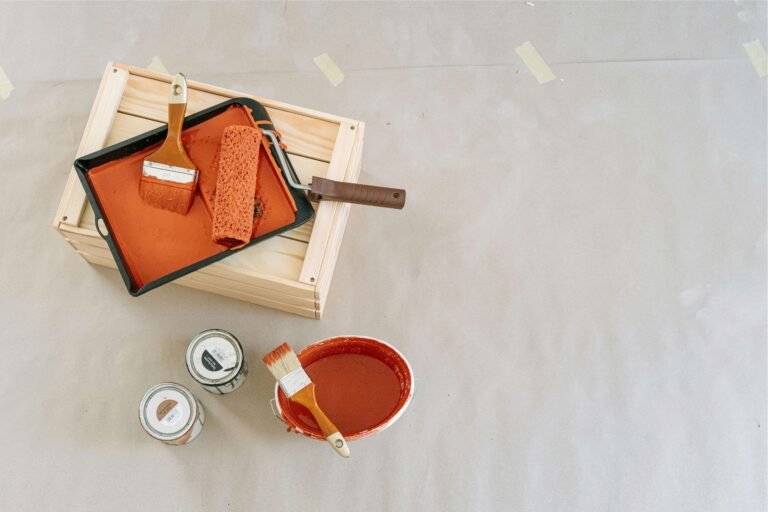
Fabric printing is an excellent way to personalize textiles and create unique designs. While synthetic dyes and commercial printing techniques dominate the market, DIY fabric printing with natural materials offers an eco-friendly and sustainable alternative. Using leaves, flowers, fruits, and vegetables, you can craft stunning fabric patterns while minimizing environmental impact. In this guide, you’ll learn how to print on fabric naturally using various techniques and materials.
2. Essential Materials & Tools
Before diving into the process, gather the necessary materials:
Fabric Choices
- Cotton, linen, hemp, and silk work best for natural printing.
- Avoid synthetic fabrics, as they don’t absorb dyes well.
Natural Printing Materials
- Leaves & Flowers – Eucalyptus, marigolds, rose petals, ferns, etc.
- Vegetables & Fruits – Beetroot, onions, lemons, potatoes, avocado pits.
- Other Natural Materials – Coffee grounds, turmeric, black beans, tea leaves.
Fixatives & Mordants
- Alum, vinegar, salt, and soy milk help fabrics retain color and prevent fading.
Tools
- Wooden blocks, brushes, rollers, stamps, steamers, and natural dyes.
3. Methods of DIY Fabric Printing
A. Leaf & Flower Printing (Eco-Printing)
- Collect leaves and flowers with vibrant pigments.
- Prepare the fabric by washing and soaking it in a mordant solution.
- Arrange plant materials on the fabric in a desired pattern.
- Press with a hammer (for direct prints) or steam the fabric.
- Let it set for 24 hours before rinsing and drying.
B. Vegetable & Fruit Stamping
- Choose vegetables or fruits like potatoes, onions, and lemons.
- Carve a pattern or use the natural textures as stamps.
- Dip in natural dye or apply directly to the fabric.
- Press onto fabric, ensuring an even application.
- Let dry completely before setting with heat.
C. Block Printing with Natural Dyes
- Carve a stamp from wood, clay, or potatoes.
- Prepare natural dyes from flowers, roots, or spices.
- Dip the stamp into the dye and press onto the fabric.
- Repeat the process for a seamless pattern.
- Fix the dye with heat to prevent fading.
D. Sun Printing (Cyanotype with Natural Ingredients)
- Prepare a light-sensitive solution using natural elements.
- Lay leaves or flowers on fabric under direct sunlight.
- Expose to sunlight for several hours.
- Rinse and let dry to reveal stunning shadow prints.
4. Step-by-Step Guide: Printing on Fabric
- Prepare the fabric by washing and mordanting for better dye absorption.
- Select natural materials and arrange them as per your design preference.
- Apply dyes or direct prints using any of the above methods.
- Let the fabric set for at least 24 hours.
- Rinse gently and heat-set using an iron or steam.
5. Best Natural Materials for Different Color Effects
- Yellow – Onion skins, turmeric, marigold flowers.
- Red/Pink – Beetroot, hibiscus, avocado pits.
- Blue/Purple – Red cabbage, blueberries, black beans.
- Green – Spinach, nettle, green tea.
- Brown/Earthy tones – Coffee, walnut shells, tea leaves.
6. Tips for Long-Lasting & Vibrant Prints
- Use mordants like alum or soy milk to enhance color longevity.
- Wash fabrics gently with cold water and mild soap.
- Avoid excessive sun exposure to prevent fading.
- Store leftover natural dyes in the refrigerator for future use.
7. Creative DIY Projects Using Natural Fabric Prints
- Handmade tote bags with leaf prints.
- Naturally printed pillowcases and napkins.
- Upcycled t-shirts with vegetable stamping.
- Wall hangings using sun printing techniques.
8. Common Mistakes & Troubleshooting
- Fading Prints – Ensure proper mordanting and heat setting.
- Uneven Colors – Soak fabric evenly before dyeing.
- Color Bleeding – Use vinegar or salt as fixatives.
- Patchy Impressions – Press stamps firmly and use quality materials.
9. Conclusion
DIY fabric printing with natural materials is a creative and sustainable way to personalize textiles. Whether you’re using flowers, vegetables, or handmade stamps, this process allows you to experiment with nature’s colors while reducing environmental impact. Give it a try and share your beautifully printed fabrics with the world!